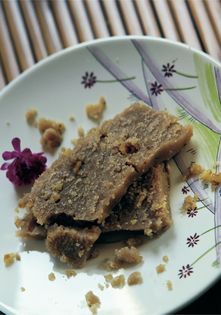Advertisement

Preparation info
- Serves
8–12
- Difficulty
Easy
Appears in
By Tessa Kiros
Published 2004
There are three types of halva that I know of: one is a solid marble-looking block that is sold by the slice; the next is a semolina-type cake with nuts that is baked and then has a syrup poured over; this third kind is also with semolina, but cooked completely on the stovetop and then poured into a cake tin or ring. When cool it is cut into slices and has a very familiar taste and texture to me. You may find it unusual — to me its taste holds such history. It is a standard dish that any Gr


